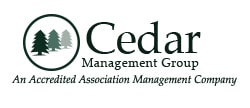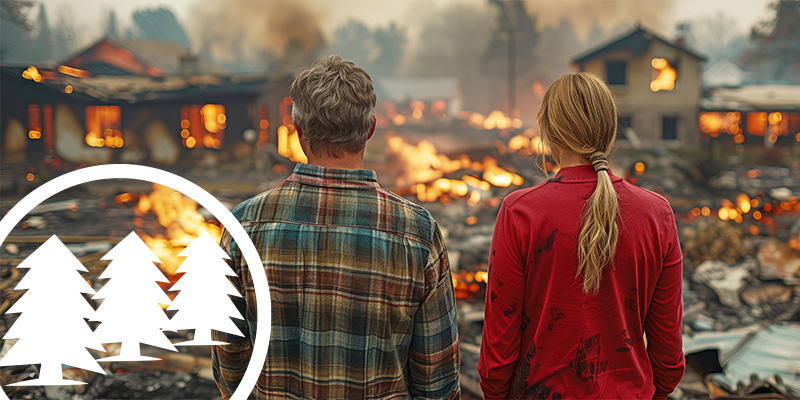Every community should come equipped with HOA and condo fire insurance. It’s an association’s first line of defense against financial ruin when tragedy strikes. Far too often, association boards fail to maintain up-to-date coverage, resulting in unwelcome surprises and fiscal instability.
What is HOA and Condo Fire Insurance?
HOA and condo fire insurance is a type of coverage that protects shared community property and common areas from fire-related damage. It is usually part of the association’s master insurance policy, which covers buildings and structures that the association owns or maintains.
Insurance should be on every HOA fire safety checklist. It helps protect the association by providing financial coverage in the event of a fire. This way, boards won’t be forced to levy large special assessments or take out a hefty loan.
It is worth noting that an HOA or condo association’s fire insurance may not cover individual properties. Homeowners and unit owners must still obtain their own fire coverage through personal insurance policies.
What Does HOA and Condo Fire Insurance Cover?
The scope of coverage can vary depending on the association’s master policy. In general, it includes the following:
- Common Areas. Clubhouses, lobbies, hallways, gyms, and other shared facilities.
- Building Exteriors. Roofs, outer walls, and shared structural elements.
- Community Assets. Fences, pools, landscaping, and signage that may be damaged by fire.
- Shared Systems. Elevators, HVAC systems, and utilities that serve multiple units.
In a condo, the policy may also cover walls, ceilings, and floors of units up to a certain point. It depends on whether the association uses “walls-in” or “bare walls” coverage.
What Does HOA and Condo Fire Insurance Not Cover?
There are clear limits to what HOA and condominium fire insurance provides. It does not usually cover the following:
- Personal Belongings. Furniture, clothing, electronics, and valuables inside individual homes or units.
- Interior Upgrades. Custom flooring, cabinets, or fixtures installed by the owner.
- Loss of Use. Temporary housing expenses if a home becomes unlivable after a fire.
- Personal Liability. Injuries or damages caused by the homeowner’s negligence.
- Neglected Maintenance. Fires resulting from poor upkeep within a private unit may not be covered.
Due to these gaps, owners should consider purchasing their own policies to cover interiors and personal belongings.
The Importance of HOA and Condo Fire Insurance
The first step in planning for HOA fire management is to have adequate insurance. Fire insurance is essential because it protects the shared property and common areas that individual owners can’t insure on their own.
Fires can cause devastating damage to roofs, hallways, clubhouses, and other community structures. Without adequate coverage, the cost of repairs would fall directly on residents through special assessments or a significant fee hike. Having a fire insurance policy ensures that the association can quickly recover from a fire without draining reserve funds or creating financial hardship for owners.
Additionally, fire insurance provides peace of mind. For condo owners, fire insurance is particularly essential as it may also cover parts of the unit’s structure. In short, this type of coverage protects both the community’s investment and the financial well-being of its members.
Is HOA and Condo Fire Insurance Required?
Whether or not fire insurance is required depends on state laws and the governing documents. In North Carolina, for instance, both Section 47F-3-113 (for HOAs) and Section 47C-3-113 (for condos) require insurance for common elements against fire. Other states may have similar laws.
Association boards should also check their governing documents, particularly the CC&Rs and bylaws. These documents should determine whether fire insurance is mandatory. They also typically outline the exact specifications and coverage requirements for the policy.
Even without a requirement by state laws or the governing documents, associations would be wise to obtain fire insurance. After all, fire damage can significantly cripple an association’s finances, and fire insurance can help prevent that.
HOA Fire Safety Rules to Enforce
While insurance comes in after the fact, associations should do their best to prevent fires in the first place. Having safety rules can reduce HOA fire liability. Here are the rules HOAs and condos should enforce.
1. Resident Education
Board members should educate homeowners about fire safety by encouraging residents to:
- Install and maintain smoke and carbon monoxide alarms;
- Keep fire extinguishers in their homes (and know how to use them);
- Conduct monthly tests on all alarms and fire extinguishers; and,
- Develop household fire escape plans.
Associations should communicate regularly with residents about fire hazards. It is also a good idea to schedule workshops and distribute informational materials to prepare residents.
2. Landscaping and Common Area Maintenance
Associations should have a clear plan for landscaping and common area maintenance. Although they may not appear significant, these two areas of management play a crucial role in ensuring fire safety.
Every HOA and condo board should:
- Keep vegetation trimmed and clear of any structures (including dry bush, leaves, and shrubs);
- Use fire-resistant plants;
- Use gravel or other non-flammable materials instead of flammable mulch;
- Regularly water plants to keep greenery hydrated and less flammable; and,
- Ensure clear access for emergency vehicles by enforcing rules on blocked exits.
These tips also apply to individual homeowners and their properties.
3. Proper Use of Common Areas
Some communities have fireplaces, barbecues or grills, and fire pits in common areas. Board members should enforce rules on the proper use of these objects to promote safety and prevent fires. It is also a good idea to implement regulations on fireworks, especially around the holidays.
Sample rules include:
- Fireplaces, grills, and fire pits in use must never be left unattended.
- Residents must fully extinguish flames after use and before leaving.
- Dispose of ashes, coal, or used charcoal in designated fire-resistant containers only.
- Use of fireplaces, grills, and fire pits is only allowed during designated hours.
4. Fire Drills and Equipment
Associations should invest in community-wide fire drills and fire safety equipment. Fire drills should ideally take place annually to familiarize residents with evacuation routes and meeting points. All common areas should have fire extinguishers that are easily accessible. Boards should also ensure that fire authorities inspect fire safety equipment regularly.
5. Emergency Preparedness Plan
Every HOA and condo association should have an emergency preparedness plan. This plan should include community-wide evacuation routes that are accessible to all residents, designated meeting places, and communication methods.
6. Partner With Local Fire Departments
Finally, communities should collaborate with local fire departments. Fire authorities can assist the association in drafting emergency plans, conducting safety inspections, performing fire drills, and leading workshops. Having a strong relationship with the fire department can also enhance overall fire response.
Finding the Best Provider
Having HOA and condo fire insurance is essential to any community. In some cases, it is even required by law. That said, board members shouldn’t go with the first insurance provider they encounter. It is recommended to shop around, compare proposals, and negotiate to get the best deal possible.
Cedar Management Group provides effective management services to HOAs and condo associations, including help with insurance. Call us today at (877) 252-3327 or email us at help@mycmg.com to get started!
RELATED ARTICLES:
- Worker Compensation Insurance: Will Your HOA Benefit From It?
- Is Getting D And O Insurance For HOA Boards Necessary?
- Cut The HOA Budget Or Raise Assessments?




